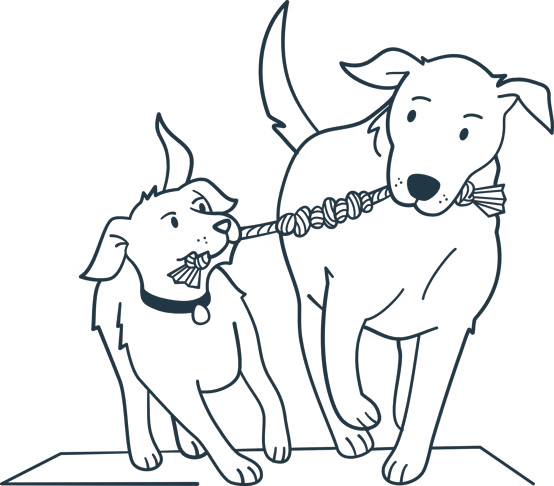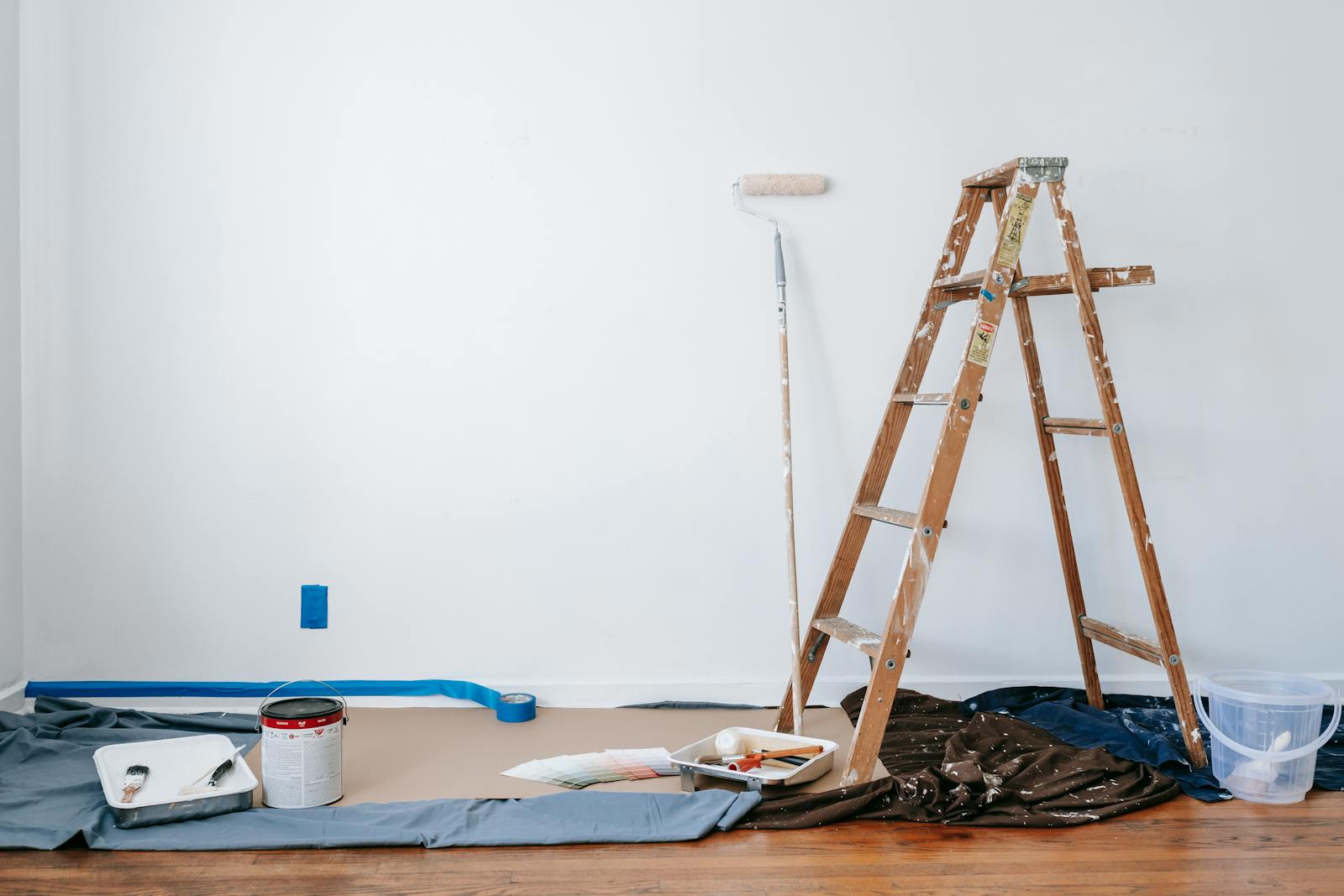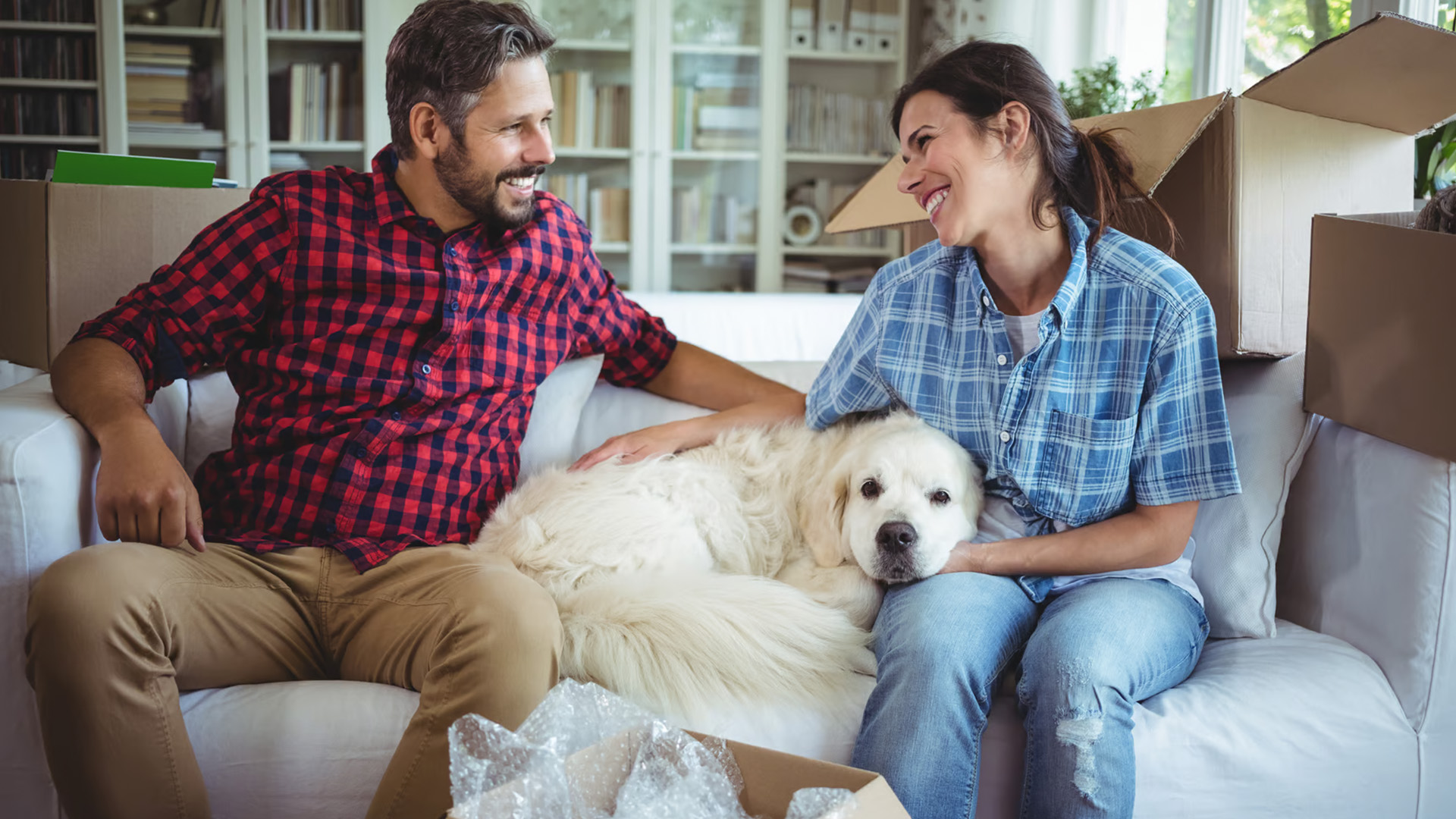Does anyone actually enjoy moving? Even when you’re excited about a new city, a new house or a new start, moving can be stressful.
This is probably doubly true for your dog, who might be new to the experience or may experience anxiety with change. As pet parents who want the best for our furry friends, there are steps to take to make a big move as easy as possible for our pets. RE/MAX Canada asked Pet Valu's Animal Care Experts Rob Keating and Julie Vaillancourt for their best advice on keeping a pup happy and calm during the packing, transporting and settling-in stages of a move.

Maintain your dog’s routine
Dogs crave routine. They like to know when they’ll be fed, when they’ll go outside, and when it’s time to play versus when it’s time to settle in for a good cuddle
Moving disrupts routines (theirs and ours) and dogs sense this almost immediately. “Any moving process is tiring and stressful and brings all of us out of our routine,” says Rob. “Of course pets pick that up and that's not optimal for them.”
To ease the strain that a disruption in routine creates for your dog, do your best to keep to a schedule that’s familiar for them.
Even if you’re feeling overworked and overwhelmed, try to feed, walk, and spend time with your dog like you would if you weren’t packing up every last one of your belongings for transport.
Studies have shown that dogs have a calming effect on their human BFFs, so time spent together during the moving process is likely to be good for both of you.
Patience and positive reinforcement are powerful tools that can help to lower your dog’s stress levels during this period of change. Keep plenty of treats on hand to reward good behaviour and consider investing in a novel and engaging new toy that will entertain your bestie while you’re busy packing.

Make a moving day plan
The best strategy for moving day with a dog is to skip the stress altogether. Sending them to stay with a trusted friend, family member, or neighbour not only reduces their moving day anxiety but also will go a long way towards preventing any escape attempts triggered by the combination of moving chaos and open front doors.
“It's not going to be a secure environment for the pet,” says Rob. “The front door is going to be left open, the dog could run out. It’s a pretty hostile environment for a dog or cat to coexist in.”
If a dog sitter isn’t an option for you, a secure crate is your next best bet. Be sure to begin crate training well in advance of any move.
Then, on moving day, set up your pup’s crate with cozy, familiar blankets, favourite toys, water, and treats. If your dog is the extra-anxious type, natural calming remedies can help them relax.
Have a strategy for settling in
Dogs are big on scents and familiar ones can be a comfort for them. “I would not buy a new bed for the new home until the dog is used to their new environment,” says Julie. “Try to move the bed and the blankets and toys without washing them. Keep that secure smell, the smell that they know.”
When you arrive at your new home, give your dog a tour on leash. Show them where the door is so they know how to ask to go out. Show them the new spot for their bed and toys and where to find their food and water dishes.
Julie and Rob also recommend introducing yourself and your pup to the neighbours. “Neighbours can direct you to the nearest Pet Valu store, the nearest dog park, the nearest vet, all that kind of stuff,” says Rob. “Using new neighbours as a resource can be helpful for sure.”
Don’t overlook the administrative aspects of moving with your dog. Be sure to update their microchip data and/or the address on their dog tags.
If you’ll be switching veterinarians, have their files sent over in advance and consider scheduling a wellness check so that your dog can get acquainted with their new vet before any health issues arise.
Returning to your regular routine as soon as possible post-move will help you and your dog settle in. Keeping feeding times, walks, and playtime consistent will help your dog adjust.
Remember to be patient and provide plenty of reassurance and positive reinforcement so that you’ll both comfortably settle into your new home.
More Resources…




















